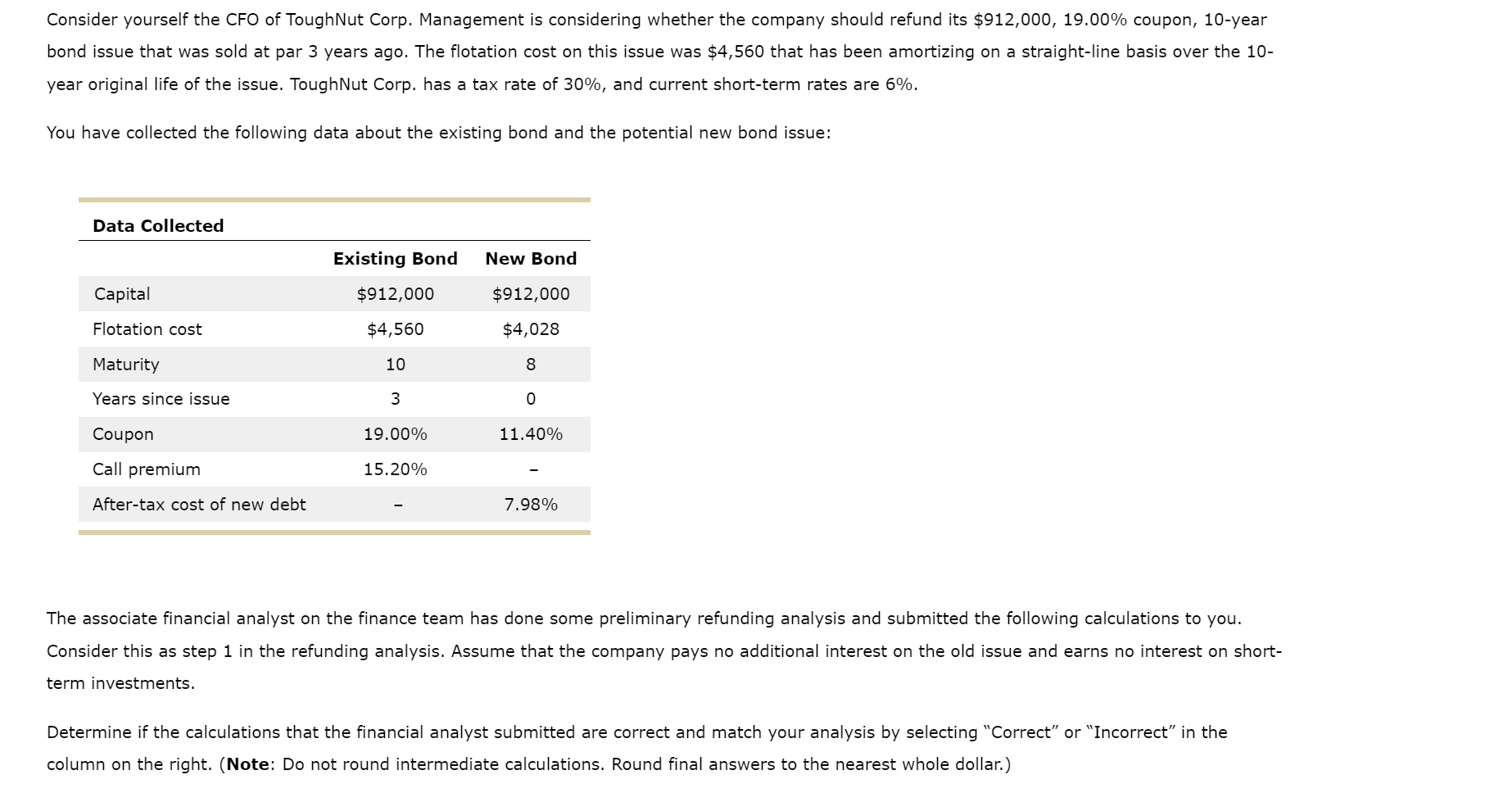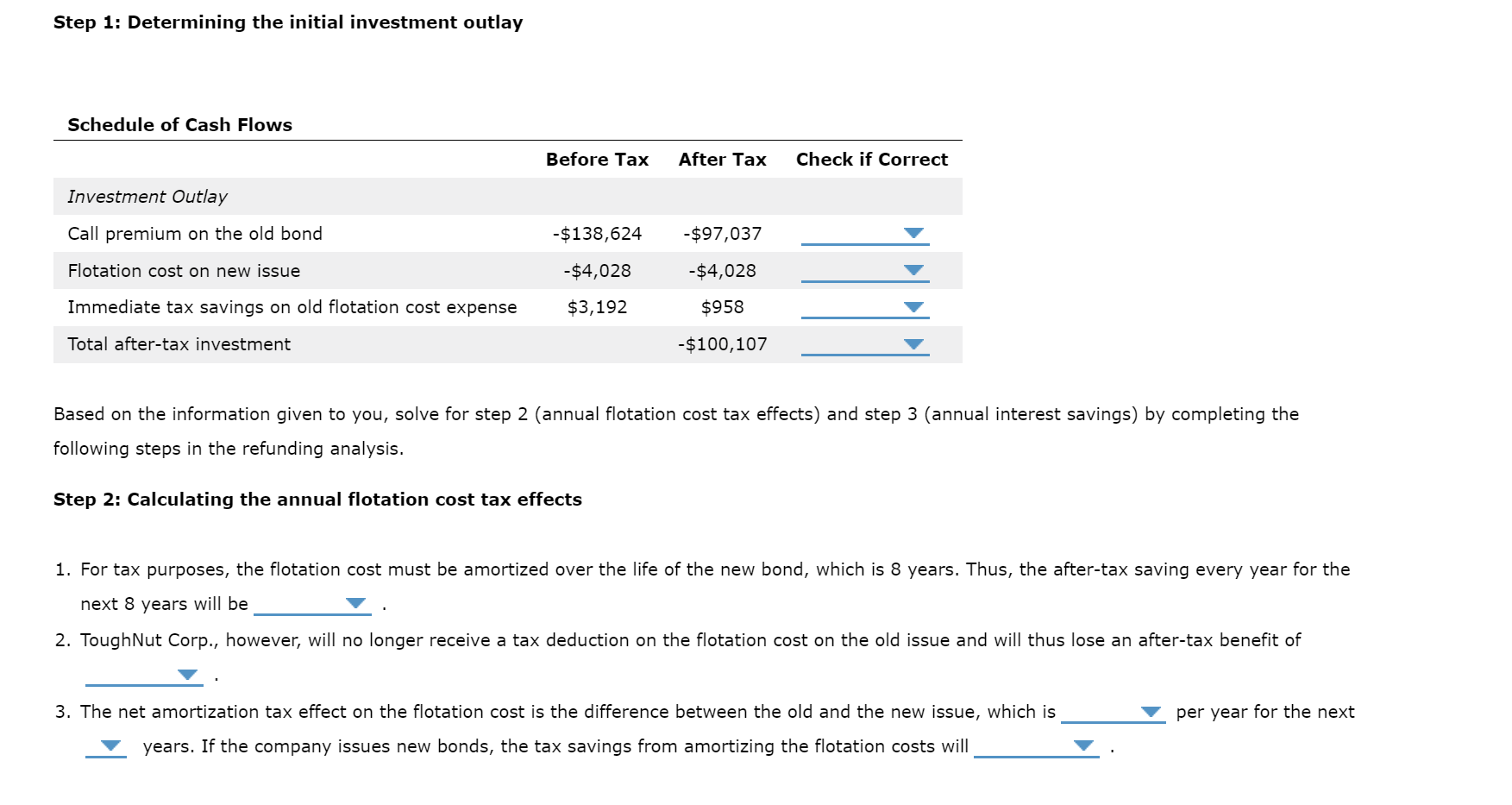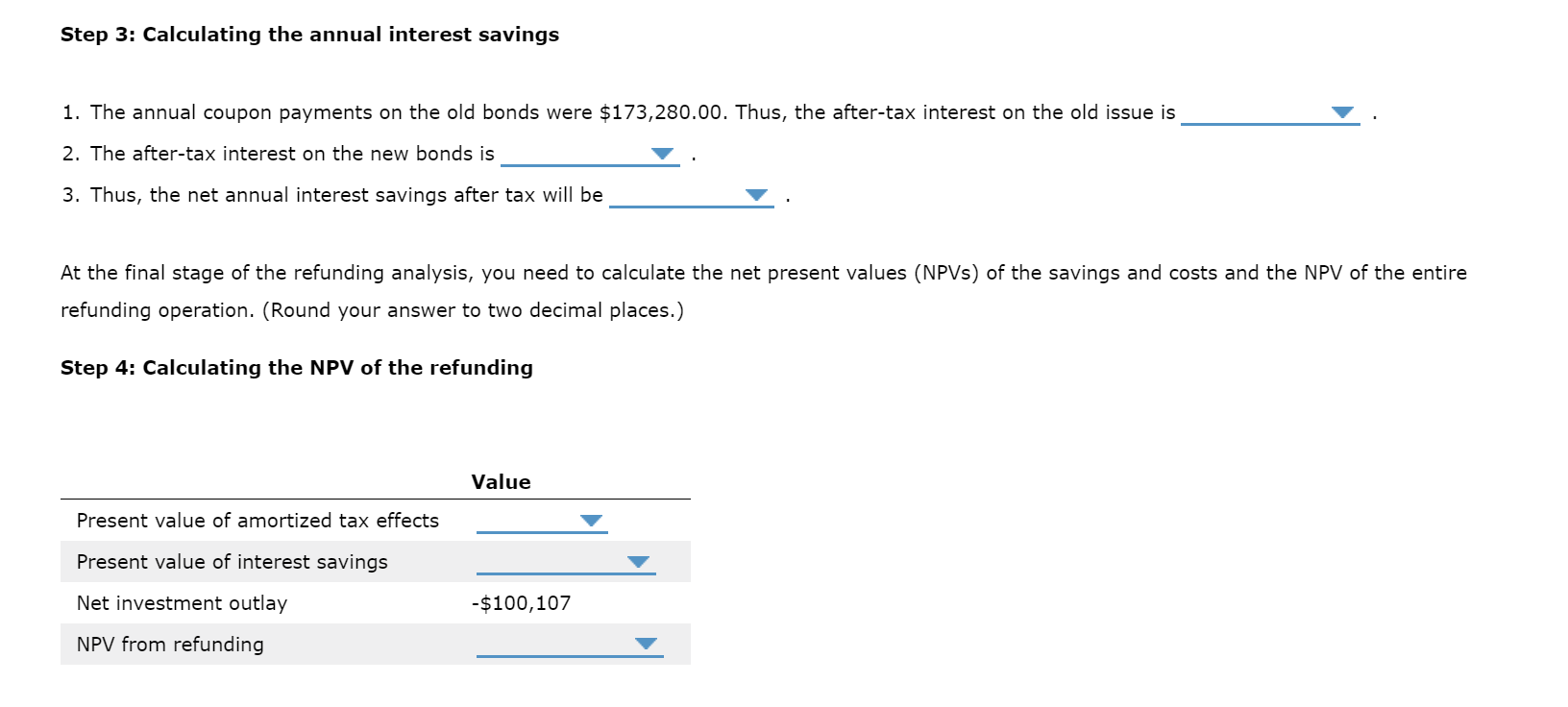


Consider yourself the CFO of ToughNut Corp. Management is considering whether the company should refund its $912,000,19.00% coupon, 10 -year bond issue that was sold at par 3 years ago. The flotation cost on this issue was $4,560 that has been amortizing on a straight-line basis 10 year original life of the issue. ToughNut Corp. has a tax rate of 30%, and current short-term rates are 6%. You have collected the following data about the existing bond and the potential new bond issue: The associate financial analyst on the finance team has done some preliminary refunding analysis and submitted the following calculations to you. Consider this as step 1 in the refunding analysis. Assume that the company pays no additional interest on the old issue and earns no interest on short term investments. Determine if the calculations that the financial analyst submitted are correct and match your analysis by selecting "Correct" or "Incorrect" in the column on the right. (Note: Do not round intermediate calculations. Round final answers to the nearest whole dollar.) Step 1: Determining the initial investment outlay Based on the information given to you, solve for step 2 (annual flotation cost tax effects) and step 3 (annual interest savings) by completing the following steps in the refunding analysis. Step 2: Calculating the annual flotation cost tax effects 1. For tax purposes, the flotation cost must be amortized over the life of the new bond, which is 8 years. Thus, the after-tax saving every year for the next 8 years will be 2. ToughNut Corp., however, will no longer receive a tax deduction on the flotation cost on the old issue and will thus lose an after-tax benefit of 3. The net amortization tax effect on the flotation cost is the difference between the old and the new issue, which is per year for the next years. If the company issues new bonds, the tax savings from amortizing the flotation costs will Step 3: Calculating the annual interest savings 1. The annual coupon payments on the old bonds were $173,280.00. Thus, the after-tax interest on the old issue is 2. The after-tax interest on the new bonds is 3. Thus, the net annual interest savings after tax will be At the final stage of the refunding analysis, you need to calculate the net present values (NPVs) of the savings and costs and the NPV of the ent refunding operation. (Round your answer to two decimal places.) Step 4: Calculating the NPV of the refunding









